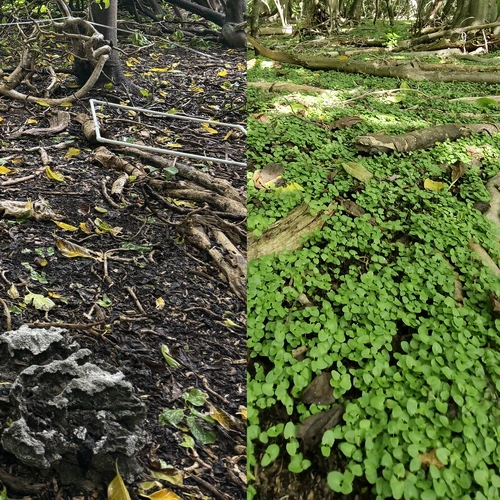
Just one year after invasive rat species has been removed from Marshall Islands, native ecosystems are flourishing once more
By
Bikar Atoll and Jemo Islet. Thanks to their remoteness, these two islands – located in the Marshall Islands – may seem inconspicuous, but they have risen in prominence recently due to the rejuvenation of their native forests and seabird populations. Such an uptick can be attributed to a 2024 campaign on both islands, intent on removing damaging, invasive rats.
A recent trip to the islands by conservationists from Island Conservation, the Marshall Islands Marine Resources Authority, the Ministry of Natural Resources and Commerce, and community members from Utrik Atoll confirmed the 2024 restoration campaign to remove invasive rats was successful.
Enjoying this article? Check out our related reads:
The team found that native seabird populations were rebounding, thereby restoring vital nutrient connections between land and sea. Nutrients from seabird guano help to boost soil fertility, a relationship which benefits native plant populations and enriches surrounding reefs. As such, more fish appear in the region, and there is the added effect of greater climate resilience for communities.

‘After only one year, the transformation is dramatic. A colony of 2000 Sooty Terns, where there was previously none, were feeding hundreds of chicks,’ said Island Conservation Project Manager Paul Jacques. ‘We also counted thousands of native Pisonia grandis tree seedlings across just 60 12m monitored plots on the forest floor—in 2024 we found zero.’
Such ecological gains are safeguarded as the islands fall within the Marshall Islands’ Marine Protected Area (MPA). Spanning 48,000 kilometres, the MPA includes waters off Bikar Atoll, where restored ecosystems on land will enrich marine habitats through nutrient runoff.
Rare corals in these waters, alongside the communities they support, are expected to thrive thanks to such a strong comeback. In particular, local communities – such as residents of Likiep – can use the surrounding area again for natural resources like life-sustaining crops.
What are the Marshall Islands?
The Marshall Islands are part of the larger island grouping of Micronesia and consist of two groups of atolls and islands in the central North Pacific Ocean. It has a warm, tropical climate year-round, characterised by two distinct seasons: a wet season from May to November, and a drier season from December to April.
Extreme rainfall can lead to extensive flooding and flash floods on the islands, and can also be part of larger tropical cyclones. Between 1977 and 2011, 78 tropical cyclones developed within or crossed the Marshall Islands. 18 per cent of these became severe events.
Climate change is likely to have a profound effect upon the Marshall Islands. Sea-level rise threatens the low-lying atolls and islands comprising it, with increased wave height and increased storms likely to erode unstable coastlines. Such erosion is worsened by dredging and mining happening on shores, particularly near the Marshall Islands’ airport.




